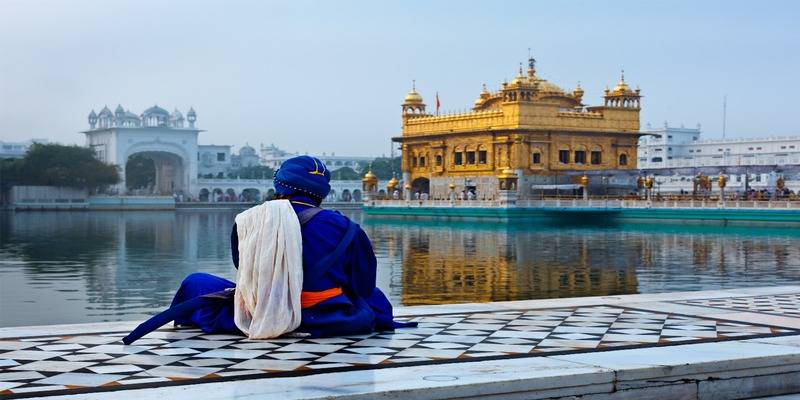Caste away: the plight of Dalit Sikhs

The caste system has been a staple of Indian society for millennia, evolving through time as empires and societies came and went. It’s no surprise that the birth of Sikhism in the 15th century brought forth another change of pace for the system. Most people don’t think of Sikhism when caste is brought up. It is touted as an egalitarian philosophy, preaching equality to all before the one true God. “Worthless is caste and worthless an exalted name; for all mankind there is but single refuge,” famous words of Guru Nanak, the first of the Sikh gurus.
He focussed on the Joti (eternal light in all humans), instead of the Jati (the manmade demarcation of caste). In theory, this is what Sikhism is truly supposed to be. But the theory doesn’t ’t always translate to reality. For context, Sikhism came about in Punjab when clashes between the Hindu majority and the ruling class of Muslim Mughals were breaking out in large droves. It was a tumultuous time for all, especially the downtrodden living on the fringes of society. In the midst of this chaos, Sikhism found a footing. Serving as reconciliation between two opposing forces, a middle ground of peace and salvation for those pushed out to the margins. Guru Nanak was influenced by both Hindu and Muslim ideologies, blending them together to create something new that would be all-encompassing.
The textual features of the Guru Granth Sahib is a testament to this — including poems and. hymns from Hindu bhagats such as Namdev and Ravidas, as well as from Muslim saints such as Kabir and Farid. Many of these mystic poets were critical of the caste system. Due to its very nature of inclusion and equality, Sikhism attracted those from the lower classes of Punjab who found refuge from the oppressive systems of the time. These included both Hindus and Muslims. Over time, however, one particular group became almost synonymous with Sikhism — the Jats. In the Hindu social order, the jats fall under the Shudra (artisans) and the ati-Shudra (untouchables). So, Sikhism has always been primarily the religion of the dispossessed.
Jats were pastoral people or cultivators of land. In Sikhism, they found a way of life that aligned with their inherited egalitarian traditions and value of manual labour. During the time of the sixth Guru, there was a large scale conversion of Hindu Jats to Sikhism. Since then, they have remained a majority of the entire Sikh population. So much so, that many classify Sikhism as an ethnic religion in the same vein as Judaism of the Jews and Shintoism of the Japanese. The Dalits, who were considered as “untouchables” in the Hindu hierarchy, also found a place in Sikhism — impacting their status and allowing them greater social mobility in many ways. However, this was limited and did not last long.
During the British rule, the Punjab Land Alienation Act of 1901 allowed land only to be owned by the agriculturist class, of which the Sikh Jats were a huge majority. The Dalits were disallowed from owning land and this set in motion a different sort of hierarchy that still exists. This imbalance in status ignited the power struggle between the Dalits as the landless agricultural workers against the Jat landlords. This largely remains the nature of the relationship between the two major groups of Sikhism today. Today, Dalit Sikhs are vying for more agency and influence in the local structures of power in which they have almost no say.
The Shiromani Gurdwara Prabandhak Committee (SGPC), responsible for the management of all gurdwaras, and the Shiromani Akali Dal, a religio-political party, are both dominated by Sikh Jats. On the other hand, Dalit Sikhs want an equal say in matters that relate to them as they form a sizeable chunk of the Sikh faith. As a result, there have been frequent clashes between the two. The treatment of the Dalits at the hands of the Jats has been cruel. They have been forced to build their own gurdwaras and cremation ground because they are not allowed to use the main sites meant for Jat Sikhs. Whenever the Dalit Sikhs raise their voices against injustice or try to demand fair wages, they often find themselves as victims of social exclusion with the Jats boycotting Dalit shops to run them out of business.
All of this has led to a worrying trend for the Sikh faith — the formation of ‘deras’, which are unorthodox branches of Sikhism. Historically, these were formed by those trying to claim the mantle of the next Guru of the Sikhs. Nowadays, the deras have become a tool for the oppressed classes who find that they don’t have a place in mainstream Sikhism. These Dalit Sikhs, instead of finding a refuge in Sikhism, found themselves at the bottom of a different caste hierarchy. Different in nature, different in name but the same system at the heart of it. Dr. BR Ambedkar, the Dalit hero who did the most for the liberalisation of his community, contemplated converting to Sikhism as it was “close enough” to Hinduism and would not be too alienating for the Dalits.
However, he did not convert to Sikhism. Some say he was dissuaded by the testimonies of the Dalits that had already converted to Sikhism as their untouchable status had followed them into their newfound saviour religion. While other accounts say that there was considerable pressure from Sikh political leaders of the time who were apprehensive about 60 million Dalits becoming Sikhs overnight. Such a move would have resulted in a shift in power dynamics. Whatever the reasons were, Dr. Ambedkar chose Buddhism as the pathway to shedding the untouchability of his community.
Sikhs are world-renowned for their generous, giving spirit. In whichever corner of the world they choose to reside, they adapt and become productive members of society. Wherever a crisis rears its ugly head, Sikhs, true to their warrior nature, scramble to become the first line of defence and offer help in any way possible. Touted as defenders of the weak and protectors of the oppressed, the Sikhs have achieved wonderful things in the modern world. But the plight of the Dalits in their very midst has been largely swept under the rug — ignored, overlooked and even silenced at times. The imbalance in status is taken for granted as the natural way of things, the status quo that should not be messed with.
The dominance of the Jat community has given Sikhism the guise of an ethnic religion when it was specifically meant to be inclusive to all castes, communities and colours from its very inception. As long as this treatment of the lower castes in Sikhism continues, it will forever scar the legacy of this religion which was born out of a need to give those caught between ideological, political and dogmatic chaos, a path towards salvation.






